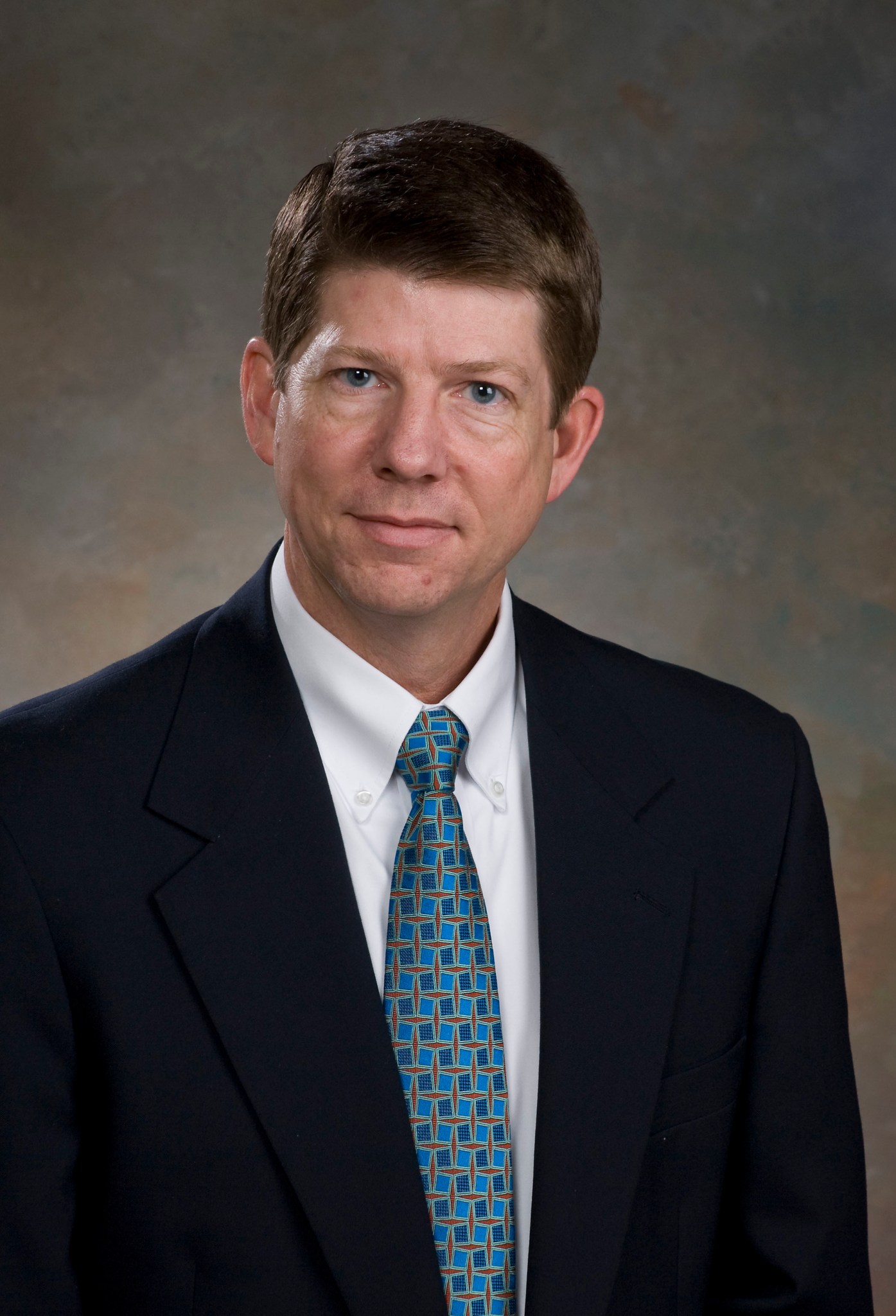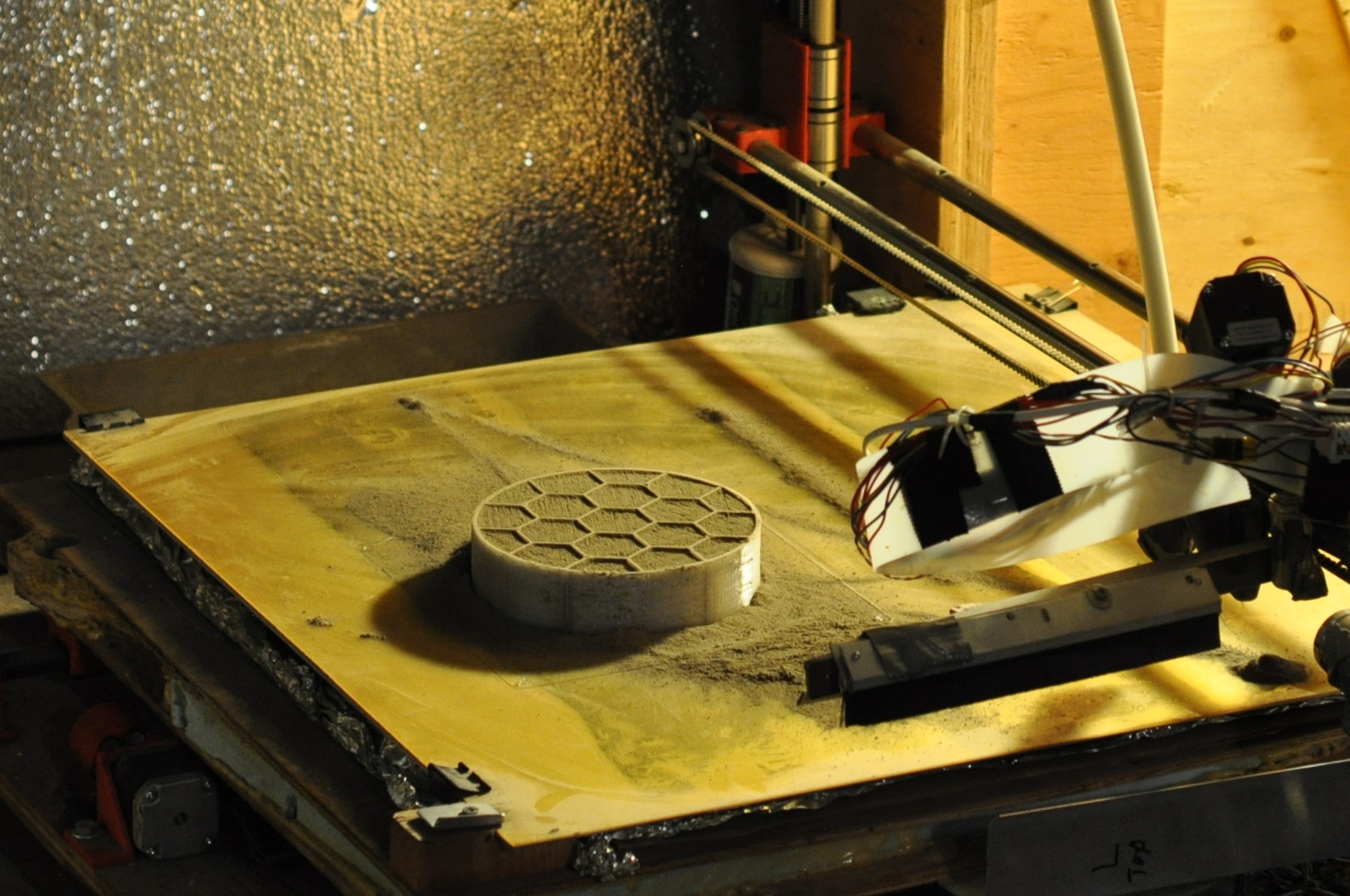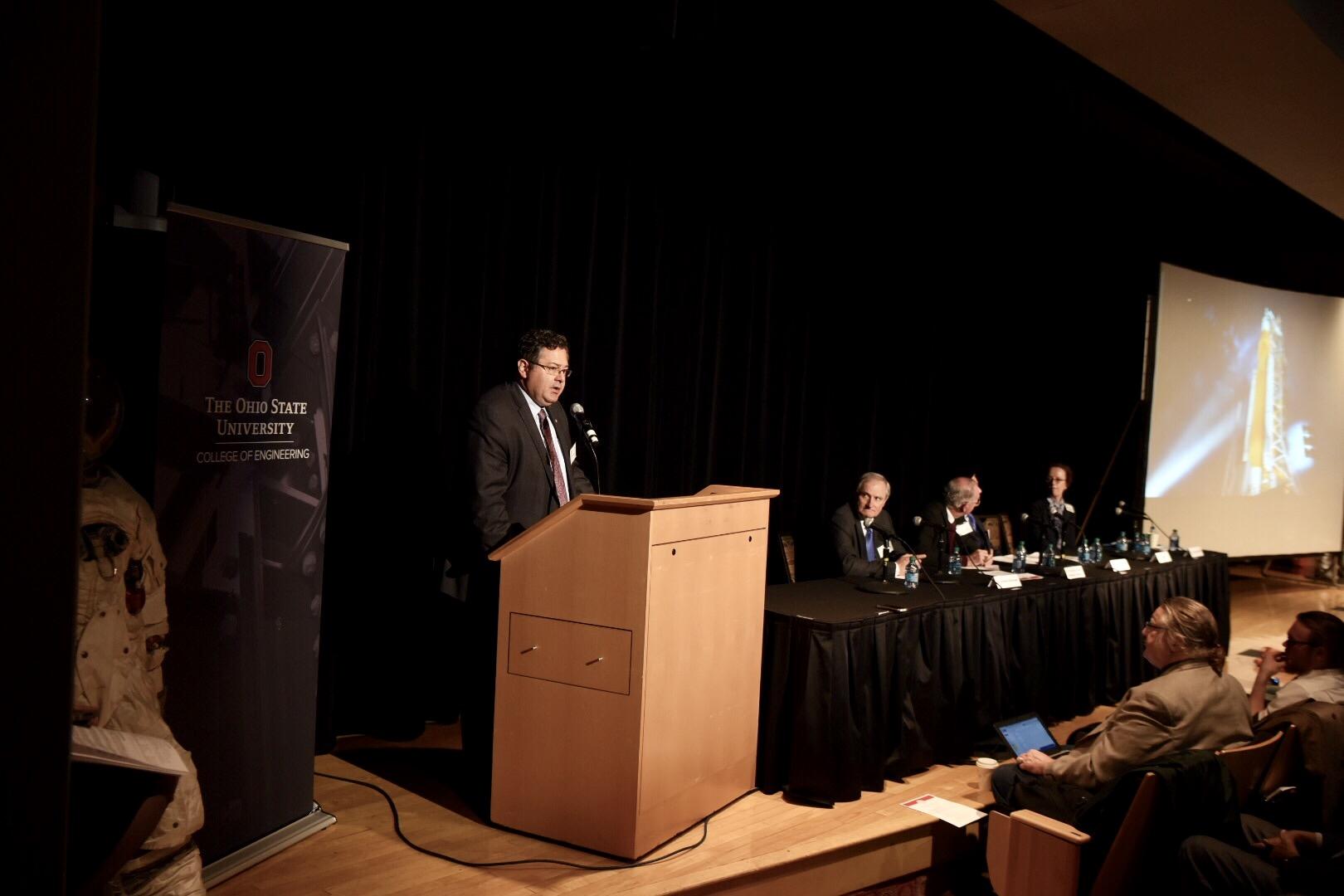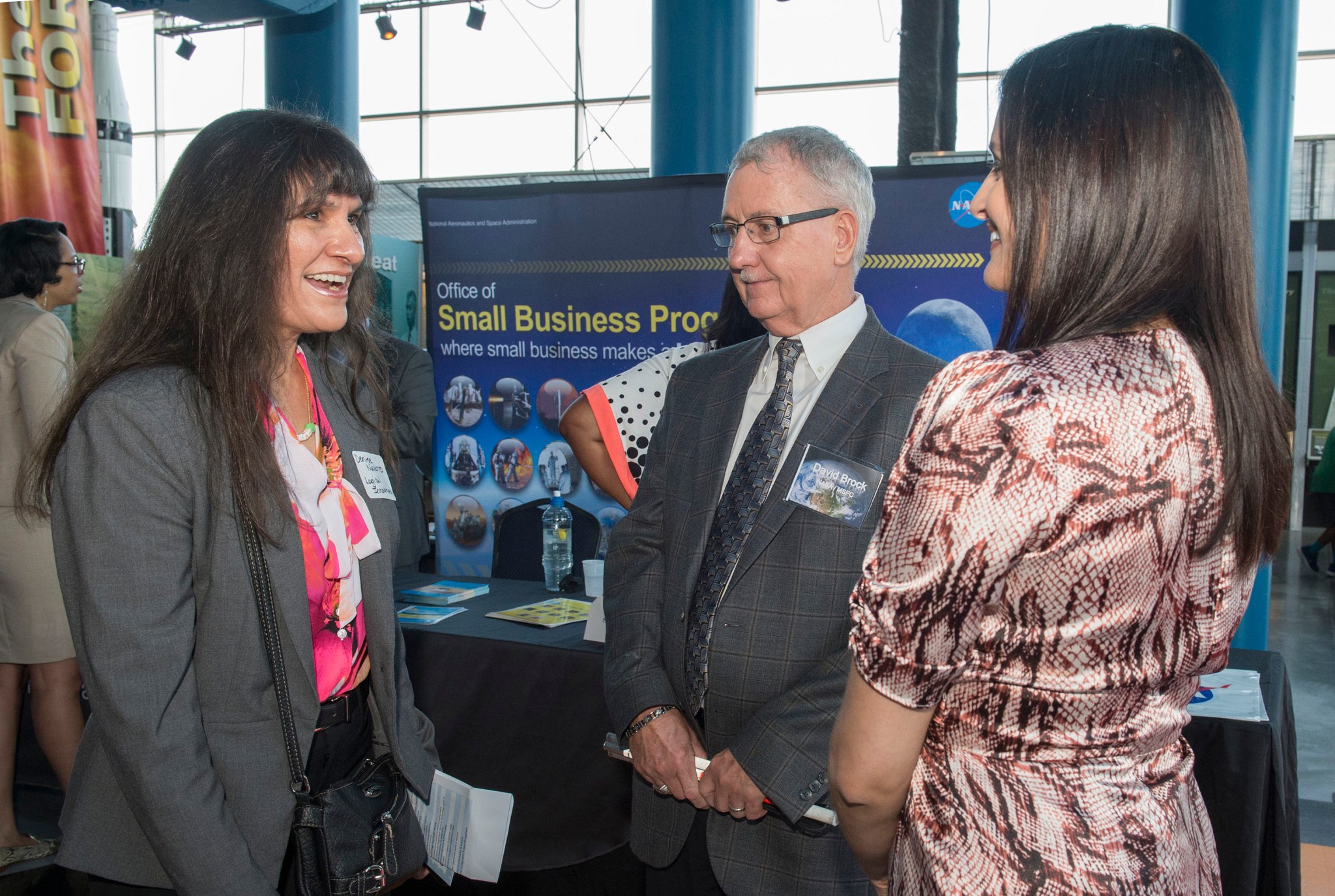In This Week’s Star
- Daniel Mitchell Named Technical Leader for Avionics and Software Engineering at Marshall Center
- Marshall Recognizes Louisiana’s Ongoing and Historic Role in Space Exploration
- NASA Awards $100,000 in First Printing Stage of 3D-Printed Habitat Challenge
- Center Director Todd May Highlights Marshall’s Role in Global Space Exploration at Armstrong Space Symposium
- Marshall Hosts Service-Disabled Veteran-Owned Small Business Industry Day May 9
- This Week in NASA History: First Flight of Space Shuttle Endeavour Launches — May 7, 1992
- Obituaries
Daniel Mitchell Named Technical Leader for Avionics and Software Engineering at Marshall Center
Daniel Mitchell has been named the senior technical leader for avionics and software engineering in the Space Systems Department at NASA’s Marshall Space Flight Center. In this position, he will be responsible for the development of the integrated vehicle avionics and flight software for NASA’s Space Launch System.
Throughout his 27-year NASA career, Mitchell has served in various technical and leadership positions. He began his career in May 1990 as a computer engineer in Marshall’s Information and Electronic Systems Laboratory, where he was responsible for the development of several key avionics and software integration facilities. Between September 1999 and June 2006, Mitchell was avionics and software lead on several Marshall-managed projects. From June 2006 to January 2011, he was manager for the Avionics and Integrated Vehicle System Test Work Breakdown Structure within the Ares Vehicle Integration Office.
Mitchell became the lead engineer for the SLS integrated avionics and software discipline in February 2011. In June 2014, he was selected to lead the Space Systems Department Flight and Ground Software Division, which is responsible for development of the SLS flight software, as well as the SLS integrated avionics and software test facilities.
Prior to his NASA career, Mitchell worked for TRW Inc. as lead engineer of the software simulation system used to perform verification and validation testing of the Patriot Missile System Information and Coordination Central tactical software.
Mitchell earned a bachelor’s degree in computer engineering from Auburn University in 1986, and a master’s degree in systems engineering from the University of Alabama in Huntsville in 2008. He has received numerous awards for his contributions to NASA and Marshall, including the Medal for Outstanding Leadership, Director’s Commendation, Certificate of Appreciation and numerous group and special service awards.
A native of Huntsville, Mitchell is married to the former Teri Heffington, and they have two children.
Marshall Recognizes Louisiana’s Ongoing and Historic Role in Space Exploration
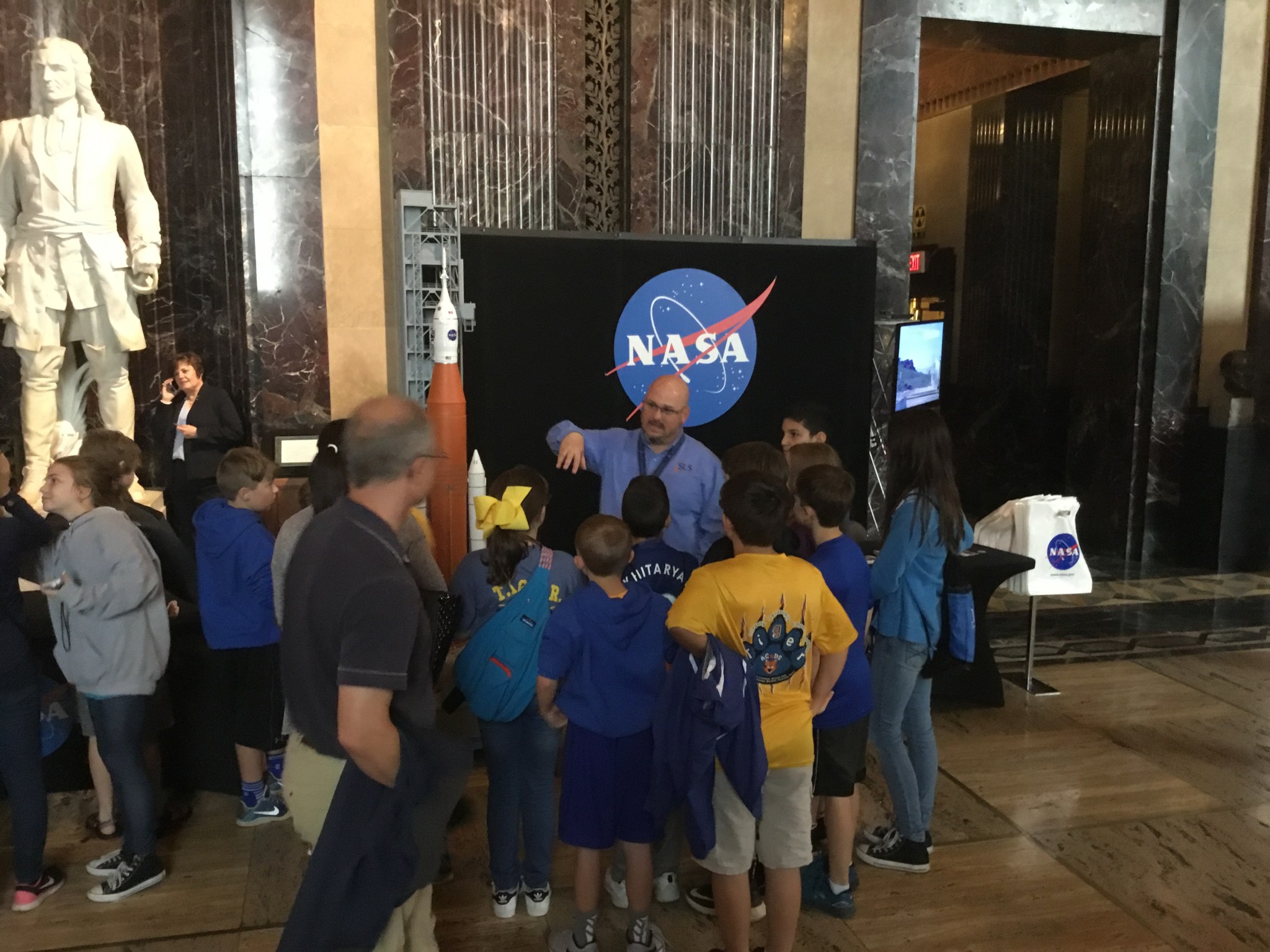
NASA’s Marshall Space Flight Center celebrated NASA Day in Baton Rouge at the Louisiana State Capitol on May 4. Marshall manages the Michoud Assembly Facility in New Orleans where the core stage of NASA’s Space Launch System rocket is being built. Over 500 students, visitors and state employees visited with team members representing Marshall, Michoud and NASA’s Stennis Space Center. (NASA/MSFC/Will Bryan)
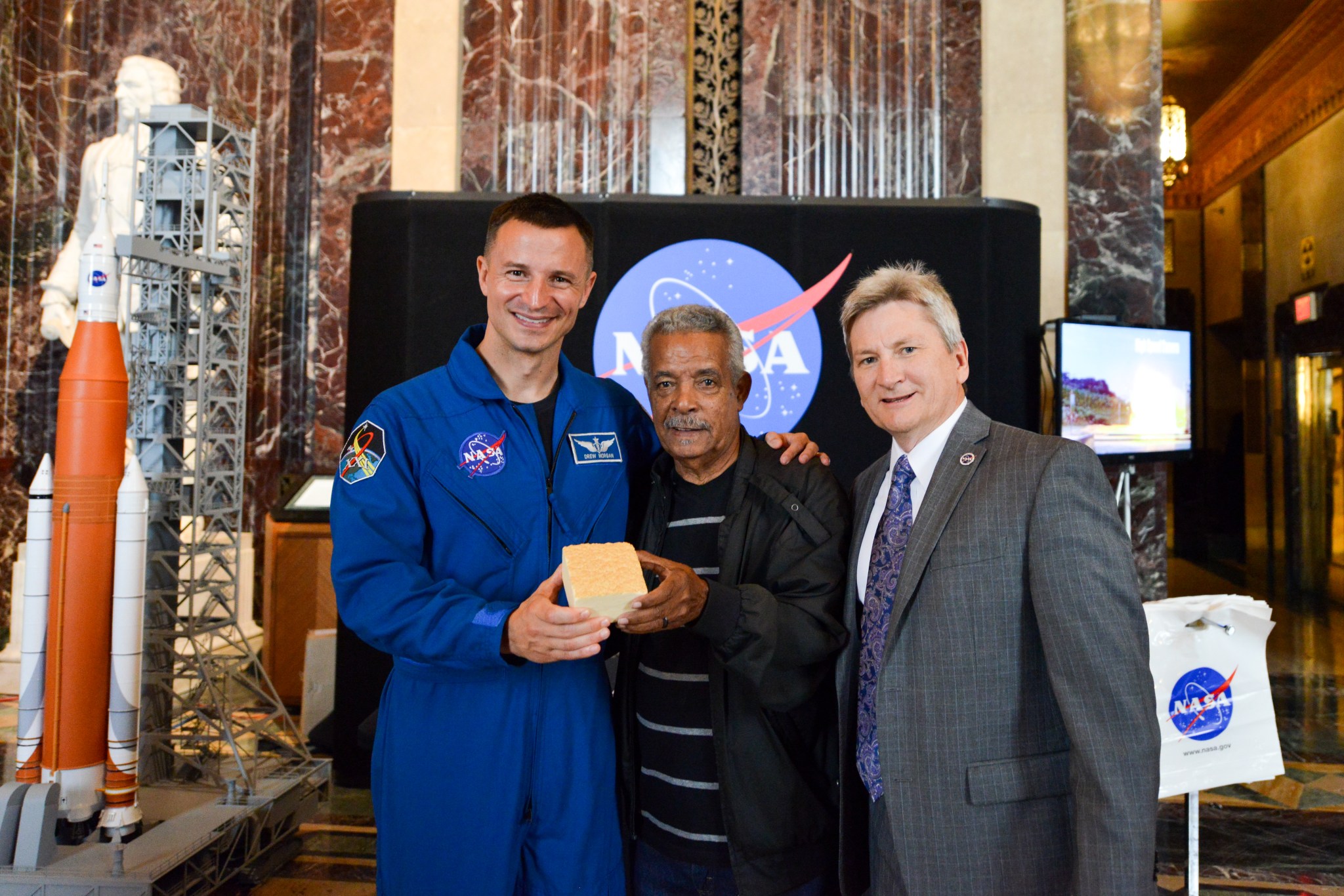
From left, NASA astronaut Drew Morgan, Roland Diaz a retired Michoud employee, and Johnny Stephenson, Marshall’s director for the Office of Strategic Analysis and Communications, attended the NASA Day in Baton Rouge celebrations at the Louisiana State Capitol. Diaz, who is deaf, worked at the Michoud Assembly Facility in New Orleans for 25 years spraying protective foam onto the outside of the space shuttle’s external tanks. He worked his way up from painter to janitor to foam sprayer at Michoud. He and Morgan are holding a piece of the insulating foam that distinguished Diaz’s NASA career. (NASA)
NASA Awards $100,000 in First Printing Stage of 3D-Printed Habitat Challenge
By Janet Sudnik
Seven teams working on technology that could someday be used to create habitats from materials on other worlds have completed the first printing segment of NASA’s 3D-Printed Habitat Challenge. NASA has awarded $100,000 to the two top-scoring teams from the Phase 2: Level 1 Compression Test Competition. Point-based awards were made to Foster + Partners | Branch Technology of Chattanooga, Tennessee, which earned $85,930, and the University of Alaska, Fairbanks, earning $14,070.
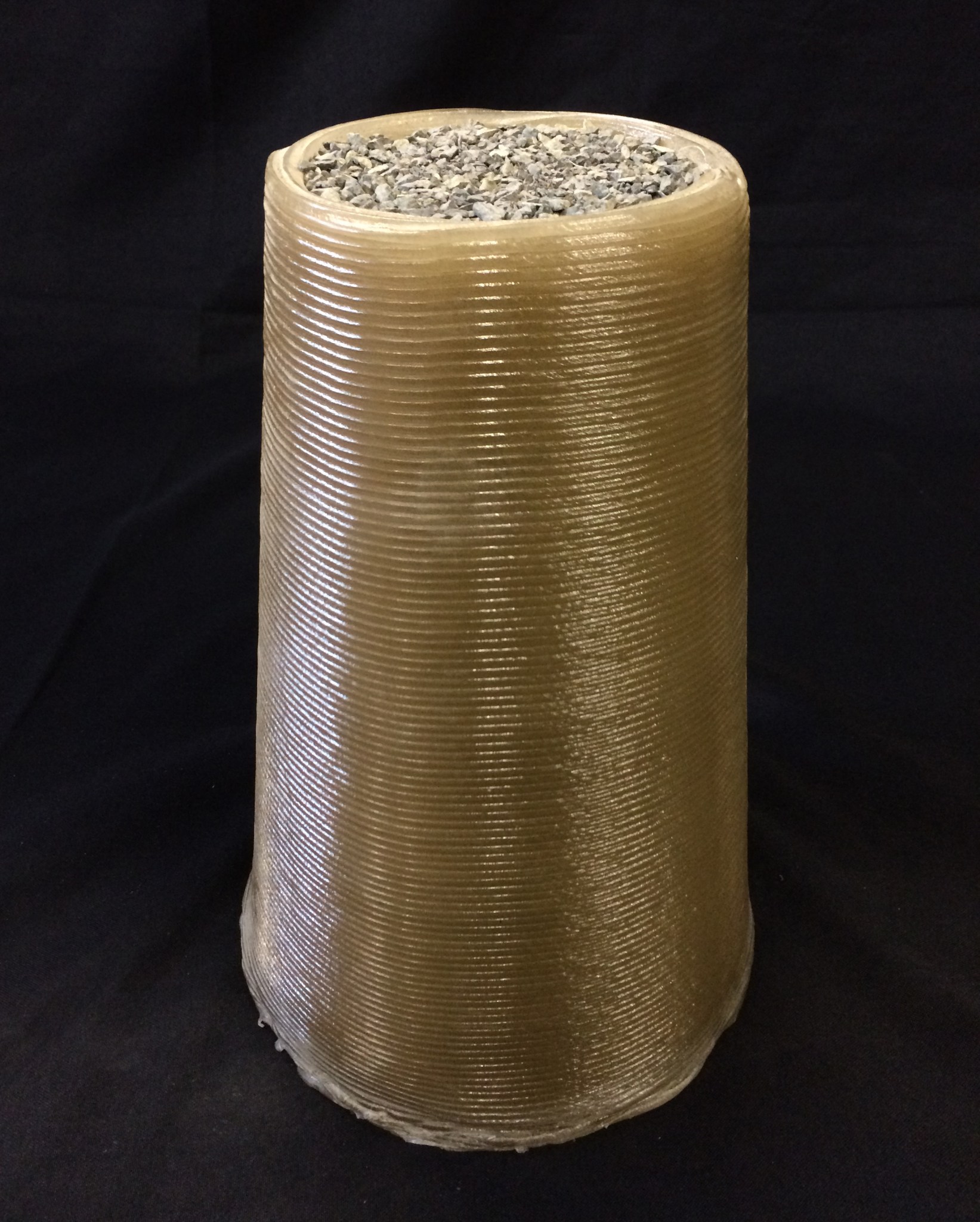
The Level 1 Compression Test Competition is the first of three sub-competitions within Phase 2. For this stage, teams were tasked with developing 3D-printable materials, using a 3-D printer, and printing two samples: a truncated cone and a cylinder. Judges evaluated results from lab tests performed on the samples to determine a score.
“Seeing tangible, 3D-printed objects for this phase makes the goals of this challenge more conceivable than ever,” said Monsi Roman, program manager of Centennial Challenges, which is managed at NASA’s Marshall Space Flight Center. “This is the first step toward building an entire habitat structure, and the potential to use this technology to aid human exploration to new worlds is thrilling.”
The goal of the challenge is to foster the development of technologies to manufacture a habitat using local indigenous materials with, or without, recyclable materials. The vision is that autonomous machines will someday be deployed in deep space destinations, including Mars, to construct shelters for human habitation. On Earth, these same capabilities could be used to produce affordable housing wherever it is needed or where access to conventional building materials and skills are limited. The competition is run through a partnership with NASA’s Centennial Challenges Program and Bradley University in Peoria, Illinois.
The 3D-Printed Habitat Challenge comprises three phases: Phase 1, the Design Competition, was completed in 2015. Phase 2, the Structural Member Competition, carries a $1.1 million prize purse and focuses on the material technologies needed to create structural components. Phase 3, the On-Site Habitat Competition, has a $1.4 million prize purse and focuses on fabrication technologies.
For more information about the competition, visit: https://www.nasa.gov/3DPHab.
Sudnik, an ASRC Federal/Analytical Services employee, supports Marshall’s Office of Strategic Analysis & Communications.
Center Director Todd May Highlights Marshall’s Role in Global Space Exploration at Armstrong Space Symposium
On May 8, NASA’s Marshall Space Flight Center Director Todd May spoke on a panel at Ohio State University’s Armstrong Space Symposium in Columbus, Ohio. The panel, titled “‘For All Mankind’: Space as a Global Enterprise,” was a reflection on pioneering astronaut Neil Armstrong’s quote, “We came in peace for all mankind,” highlighting how space exploration involves many nations and enables social change.
May discussed how NASA’s Space Launch System and Marshall Space Flight Center will play an important role in global collaboration, allowing the United States to work with space agencies around the world to leverage the rocket’s capabilities for human and robotic missions around the solar system. He also noted that Marshall’s efforts in advancing technologies such as additive manufacturing and advance composites will influence and improve mission-critical hardware.
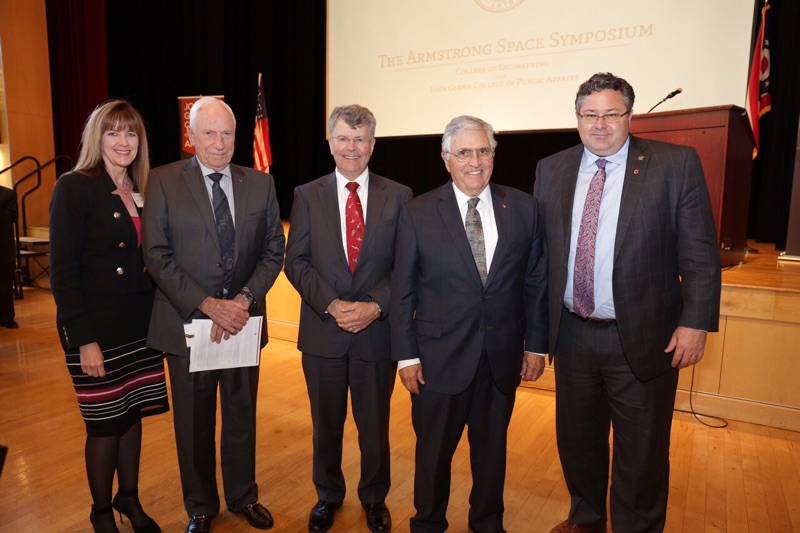
The symposium honored Armstrong, an Ohio native and the first man to walk on the moon. Former NASA astronauts Michael Collins, Walter Cunningham, Harrison Schmitt and Al Worden were also featured guests, participating on the panel “The Making of the ‘Small Step’ and ‘Giant Leap.’”
Marshall Hosts Service-Disabled Veteran-Owned Small Business Industry Day May 9
NASA’s Marshall Space Flight Center hosted more than 700 small and large business representatives and federal government personnel May 9 at NASA’s Service-Disabled Veteran-Owned Small Business Industry Day at the Davidson Center for Space Exploration in Huntsville. The event, organized by Marshall’s Small Business Office, provided participants with networking opportunities and information on doing business with NASA and its prime contractors.
“It’s about building new opportunities for men and women who have served our nation with honor,” said Roy Malone, director of Marshall’s Office of Center Operations and an 11-year U.S. Navy veteran prior to joining NASA in 1994. “Now we need the help of our veterans on our mission to Mars and beyond.”
NASA seeks to create new business opportunities for historically underserved, service-disabled veteran-owned small businesses, in accordance with Presidential Executive Order 13360. Learn more at https://osbp.nasa.gov.
This Week in NASA History: First Flight of Space Shuttle Endeavour Launches — May 7, 1992
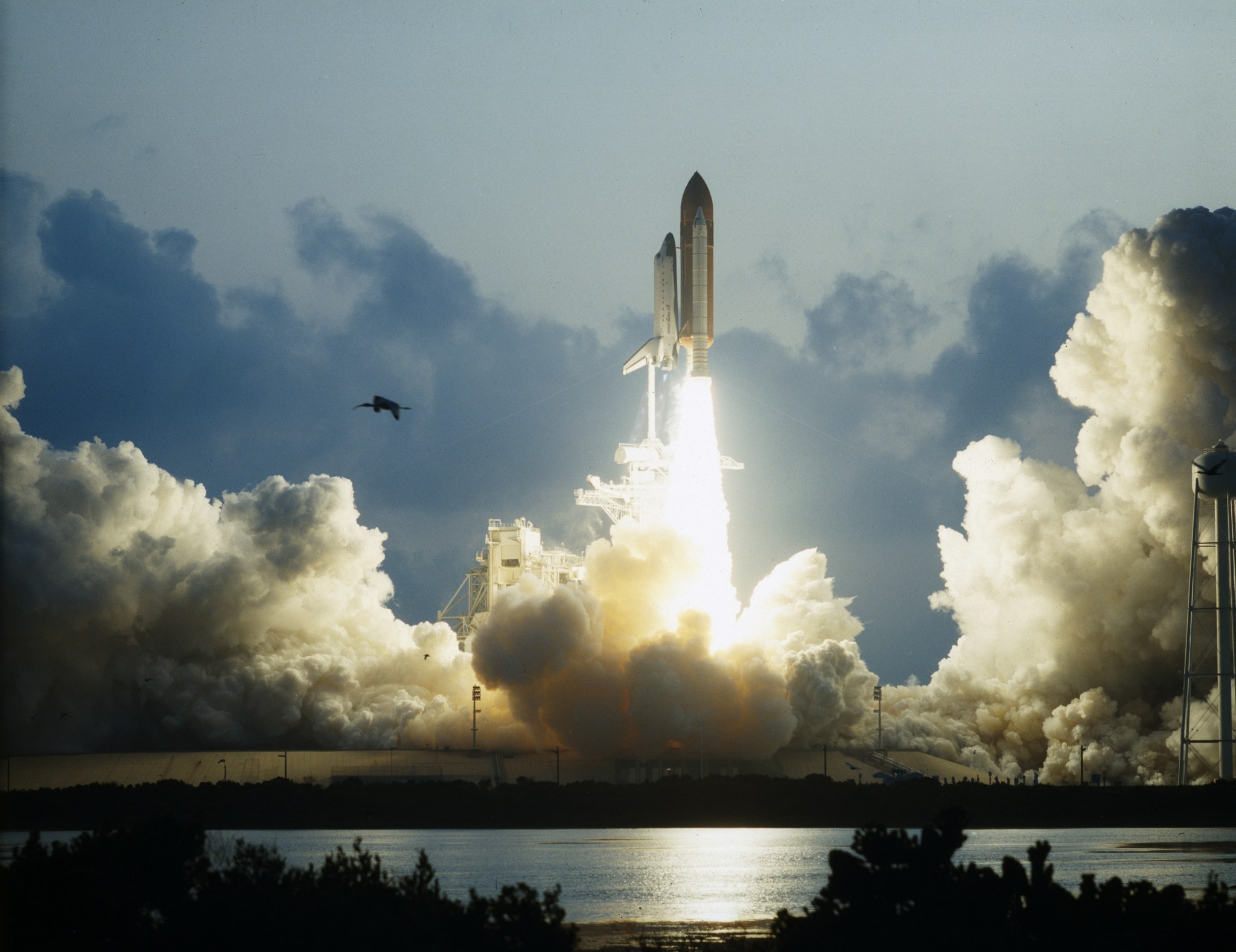
This week in 1992, STS-49 launched from NASA’s Kennedy Space Center on the first flight of the space shuttle Endeavour. The primary mission objective was to capture, repair and redeploy the INTELSAT VI (F-3) communications satellite. Today, NASA’s Marshall Space Flight Center is developing NASA’s Space Launch System, the most powerful rocket ever built that will be capable of sending astronauts deeper into space than ever before, including to Mars. The NASA History Program is responsible for generating, disseminating and preserving NASA’s remarkable history and providing a comprehensive understanding of the institutional, cultural, social, political, economic, technological and scientific aspects of NASA’s activities in aeronautics and space. For more pictures like this one and to connect to NASA’s history, visit the Marshall History Program’s webpage. (NASA)
Obituaries
Sanford W. Downs, Jr., 87, of Maryville, Tennessee, died April 28. He retired from the Marshall Center in 1979 as an Earth scientist. He is survived by his wife, Myron Downs.
Edward J. Bryan, 94, of Huntsville, died May 1. He retired from the Marshall Center in 1994 as an aerospace engineer.
Hazel Sanders, 86, of Hixson, Tennessee, died May 2. She retired from the Marshall Center in 1990 as a secretary.



























